
The Docks School by Mikou Design Studio
Paris architects Mikou Design Studio have won a competition to design a zero-energy school and sports complex for Saint Ouen in France.

Called The Docks School, the building is arranged in tiers that slant diagonally across the building to form wide triangular terraces.
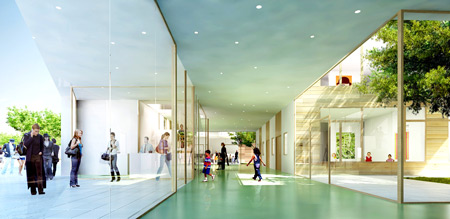
All classrooms face southwards and open onto internal courtyards, sheltered by three canopies of photovoltaic panels.
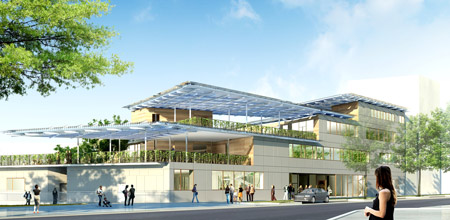
Construction is expected in 2012.
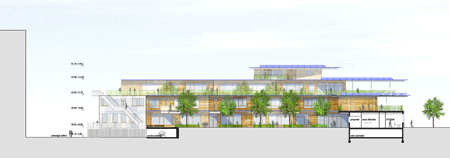
Click for larger image
More about Mikou Design Studio on Dezeen:
Bailly School Complex in Paris (January 2010)
Théatre le Bateau Feu for Dunkerque (December 2009)
Here's some more information from Mikou Design Studio:
--
Zero Energy School and Sports Complex, Saint Ouen - France
A school between playgrounds and gardens
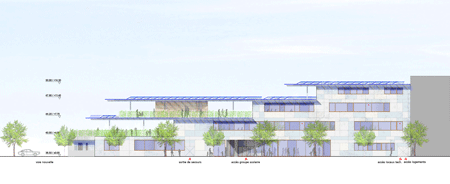
Click for larger image
The Docks school in Saint Ouen is in a strategic urban location, in the middle of the Zac des Docks mixed development area, which an exemplary case of sustainable urban development. Located in the middle of an urban complex composed mainly of high-rise office blocks and housing, it will also be visible because of its roof, a fundamental feature of the project onto which the openings of neighbouring buildings face.

Click for larger image
We designed this amenity to consume zero energy in order to be emblematic of the sustainable development of the Zac des Docks project and to be a strong architectural landmark in its neighbourhood, which is exemplary by its choice of siting, by the interior comfort provided for the children – particularly in the design of the school playgrounds and gardens – and by the treatment of the areas of photovoltaic panels, which are integrated into the architecture and are visible from the main street, giving the school a strong educational identity.
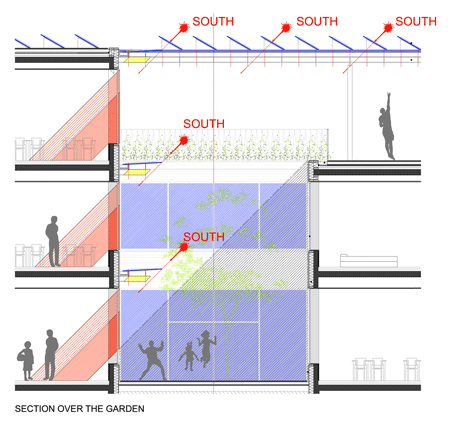
The building’s siting facilitated south-facing orientation of all the classrooms and playgrounds in order to make the greatest possible use of passive solar energy. This spatial disposition also made it possible to increase the surface areas on the south required for the photovoltaic panels which were integrated into the architecture of the covered playground areas. Therefore the scheme is in the form of a mass built in stepped tiers on the east, on the main street, which is extended by large canopies and which folds in crosswise strips on the site’s diagonal to face southwards.
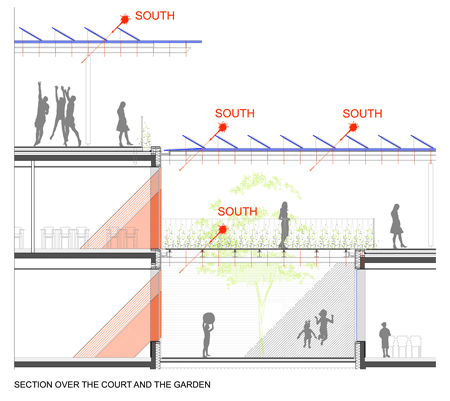
These stepped crosswise strips are separated by internal gardens which open wide east-west transparent views into the school while allowing clear identification of the various teaching areas open to the light and to the peace and quiet on sheltered internal patios. Facing southwards, the school is arranged in a succession of gardens and volumes in brightly-lit terraces which gradually descend to free the view and to let in maximum sunshine.
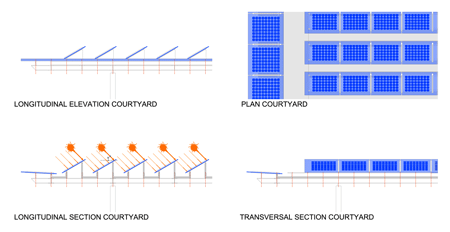
These stepped volumes include the following:
The primary school, which is arranged in a strip from the ground floor to the second upper floor, connected to its playground by timber-decked walkways which look down onto the primary school garden on the ground floor. The nursery school, which is arranged in another strip on the first upper floor, connected to its playground by timber-decked walkways which look down onto the nursery school garden on the ground floor.
The cafeteria, which opens both onto the garden on the ground floor and onto the viewpoint on the new road. The nursery school playground is on the south and west on floor level 1 above the cafeteria, and the primary school playground is on the second upper floor above the nursery school.
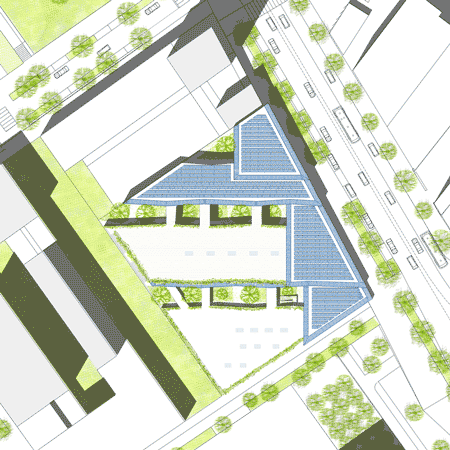
The nursery and primary school playgrounds are sheltered by canopies on the south and east on the main street, consisting of glazed photovoltaic panels inclined at 30° and spaced by solid metal strips forming gutters to avoid cast shadows. These covered playground areas designed as large semi-transparent bluish canopies descend in tiers from level 3 to level 1 while creating a visual dynamic when viewed from the street. They shelter the playgrounds from the street by creating a covered buffer space.
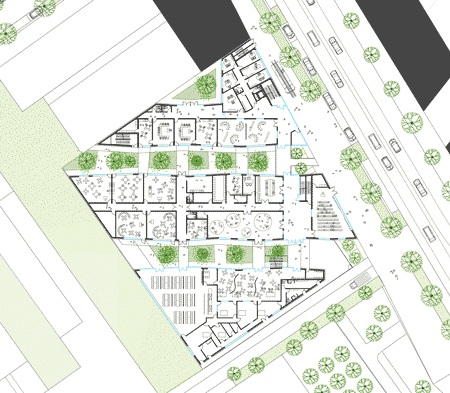
Click for larger image
Architect: Mikou Design Studio
Salwa Mikou, Selma Mikou, Cécile Jalby, Iskra Pencheva, Samiel Musolino, Lorenzo Donati, Mickael Courtay
Client: City of Saint-Ouen
Programme: Elementary school, primary school, sports and recreation centre, cafeteria, administration, parking lot 38 places.
Budget: 11 M € HT
Surface: 4 820 m2 Gross Floor Area
Location: ZAC of the Docks in Saint-Ouen
Date: competition 2009, first prize